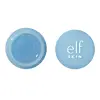What's inside
What's inside
 Key Ingredients
Key Ingredients

 Benefits
Benefits

 Concerns
Concerns

 Ingredients Side-by-side
Ingredients Side-by-side

Triisostearin
Skin ConditioningHydrogenated Polyisobutene
EmollientPolyglyceryl-10 Pentaisostearate
EmollientDextrin Palmitate
EmulsifyingEthylhexylglycerin
Skin ConditioningDiethylhexyl Syringylidenemalonate
Skin ProtectingSqualane
EmollientParfum
MaskingSimethicone
EmollientCaprylic/Capric Triglyceride
MaskingTocopherol
AntioxidantWater
Skin ConditioningRicinus Communis Seed Oil
MaskingGlycerin
HumectantSodium Hyaluronate
HumectantHydrogenated Castor Oil
Emollient1,2-Hexanediol
Skin ConditioningSoluble Collagen
HumectantLinalool
PerfumingGeraniol
PerfumingBenzyl Benzoate
AntimicrobialLimonene
PerfumingCI 77891
Cosmetic ColorantCI 42090
Cosmetic ColorantCI 45410
Cosmetic ColorantTriisostearin, Hydrogenated Polyisobutene, Polyglyceryl-10 Pentaisostearate, Dextrin Palmitate, Ethylhexylglycerin, Diethylhexyl Syringylidenemalonate, Squalane, Parfum, Simethicone, Caprylic/Capric Triglyceride, Tocopherol, Water, Ricinus Communis Seed Oil, Glycerin, Sodium Hyaluronate, Hydrogenated Castor Oil, 1,2-Hexanediol, Soluble Collagen, Linalool, Geraniol, Benzyl Benzoate, Limonene, CI 77891, CI 42090, CI 45410
Helianthus Annuus Seed Oil
EmollientOzokerite
Emulsion StabilisingZinc Oxide
Cosmetic ColorantCocos Nucifera Oil
MaskingButyrospermum Parkii Butter
Skin ConditioningPrunus Amygdalus Dulcis Oil
Skin ConditioningButyloctyl Salicylate
Skin ConditioningCaprylic/Capric Triglyceride
MaskingCetyl Alcohol
EmollientDimethicone
EmollientTheobroma Cacao Seed Butter
EmollientTocopherol
AntioxidantAloe Barbadensis Leaf Extract
EmollientCarthamus Tinctorius Seed Oil
MaskingIsopropyl Myristate
EmollientLecithin
EmollientDilinoleic Acid/Butanediol Copolymer
Phytosteryl Oleate
Skin ConditioningHydrogenated Vegetable Glycerides
EmollientIsostearic Acid
CleansingPvp
Emulsion StabilisingPolyglyceryl-3 Polyricinoleate
EmulsifyingParfum
MaskingPolyhydroxystearic Acid
EmulsifyingMyristyl Alcohol
EmollientStearyl Alcohol
EmollientLauryl Alcohol
EmollientZea Mays Oil
EmulsifyingCI 40800
Cosmetic ColorantBenzyl Benzoate
AntimicrobialHelianthus Annuus Seed Oil, Ozokerite, Zinc Oxide, Cocos Nucifera Oil, Butyrospermum Parkii Butter, Prunus Amygdalus Dulcis Oil, Butyloctyl Salicylate, Caprylic/Capric Triglyceride, Cetyl Alcohol, Dimethicone, Theobroma Cacao Seed Butter, Tocopherol, Aloe Barbadensis Leaf Extract, Carthamus Tinctorius Seed Oil, Isopropyl Myristate, Lecithin, Dilinoleic Acid/Butanediol Copolymer, Phytosteryl Oleate, Hydrogenated Vegetable Glycerides, Isostearic Acid, Pvp, Polyglyceryl-3 Polyricinoleate, Parfum, Polyhydroxystearic Acid, Myristyl Alcohol, Stearyl Alcohol, Lauryl Alcohol, Zea Mays Oil, CI 40800, Benzyl Benzoate
 Reviews
Reviews

Ingredients Explained
These ingredients are found in both products.
Ingredients higher up in an ingredient list are typically present in a larger amount.
Benzyl Benzoate is usually created from the condensation of benzoic acid and benzyl alcohol. It is used as a preservative, solvent, and has a floral/balsamic scent in large amounts.
As a preservative, Benzyl Benzoate works against bacteria and fungus. It is often used to treat scabies and lice in medicine.
Solvents are used to keep ingredients together in a product. They can help dissolve ingredients to stable bases or help evenly distribute ingredients throughout the product.
Due to its fragrance, Benzyl Benzoate can be sensitizing and may cause contact dermatitis. It is a known EU allergen. We recommend speaking with a professional if you have any concerns.
Benzyl Benzoate can be naturally found in cranberries and peaches.
Learn more about Benzyl BenzoateThis ingredient is an emollient, solvent, and texture enhancer. It is considered a skin-softener by helping the skin prevent moisture loss.
It helps thicken a product's formula and makes it easier to spread by dissolving clumping compounds.
Caprylic Triglyceride is made by combining glycerin with coconut oil, forming a clear liquid.
While there is an assumption Caprylic Triglyceride can clog pores due to it being derived from coconut oil, there is no research supporting this.
Learn more about Caprylic/Capric TriglycerideParfum is a catch-all term for an ingredient or more that is used to give a scent to products.
Also called "fragrance", this ingredient can be a blend of hundreds of chemicals or plant oils. This means every product with "fragrance" or "parfum" in the ingredients list is a different mixture.
For instance, Habanolide is a proprietary trade name for a specific aroma chemical. When used as a fragrance ingredient in cosmetics, most aroma chemicals fall under the broad labeling category of “FRAGRANCE” or “PARFUM” according to EU and US regulations.
The term 'parfum' or 'fragrance' is not regulated in many countries. In many cases, it is up to the brand to define this term.
For instance, many brands choose to label themselves as "fragrance-free" because they are not using synthetic fragrances. However, their products may still contain ingredients such as essential oils that are considered a fragrance by INCI standards.
One example is Calendula flower extract. Calendula is an essential oil that still imparts a scent or 'fragrance'.
Depending on the blend, the ingredients in the mixture can cause allergies and sensitivities on the skin. Some ingredients that are known EU allergens include linalool and citronellol.
Parfum can also be used to mask or cover an unpleasant scent.
The bottom line is: not all fragrances/parfum/ingredients are created equally. If you are worried about fragrances, we recommend taking a closer look at an ingredient. And of course, we always recommend speaking with a professional.
Learn more about ParfumTocopherol (also known as Vitamin E) is a common antioxidant used to help protect the skin from free-radicals and strengthen the skin barrier. It's also fat soluble - this means our skin is great at absorbing it.
Vitamin E also helps keep your natural skin lipids healthy. Your lipid skin barrier naturally consists of lipids, ceramides, and fatty acids. Vitamin E offers extra protection for your skin’s lipid barrier, keeping your skin healthy and nourished.
Another benefit is a bit of UV protection. Vitamin E helps reduce the damage caused by UVB rays. (It should not replace your sunscreen). Combining it with Vitamin C can decrease sunburned cells and hyperpigmentation after UV exposure.
You might have noticed Vitamin E + C often paired together. This is because it is great at stabilizing Vitamin C. Using the two together helps increase the effectiveness of both ingredients.
There are often claims that Vitamin E can reduce/prevent scarring, but these claims haven't been confirmed by scientific research.
Learn more about Tocopherol